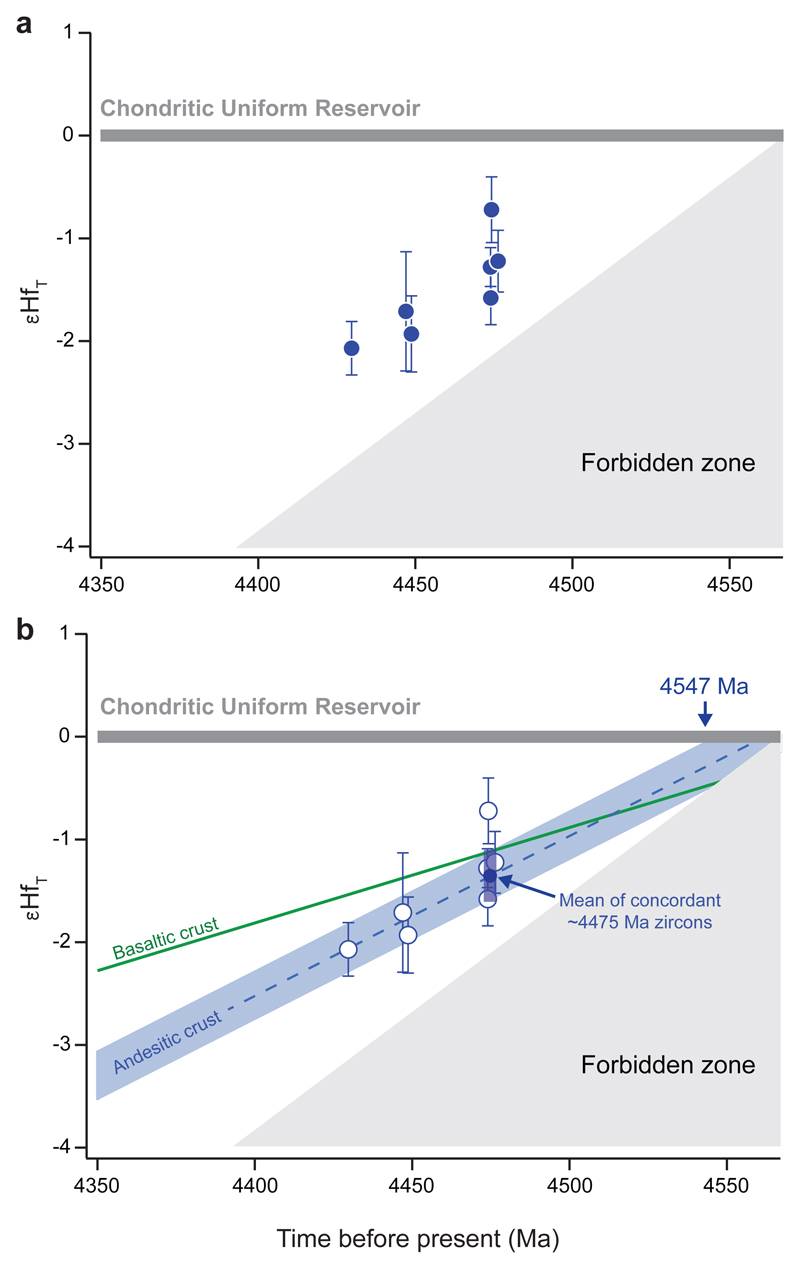Fig. 2. Hf isotope evolution diagrams.
Shown in (A) are the initial εHf values for the seven individual NWA 7034 zircons calculated with their corresponding 207Pb-206Pb ages using a λ176Lu value of 1.867±0.008×10-11 year-1 (ref. 30) and Chondritic Uniform Reservoir parameters of ref. 18. The upper boundary of the forbidden region represents a reservoir with a 176Lu/177Hf = 0 and a formation age defined by the age of the Solar System at 4567 Ma31. In (B), we show the time evolution of basaltic and andesitic crustal reservoirs required to account for the average initial Hf isotope compositions of the three concordant 4475 Ma zircons (S24b4, S24b7 and S25b10) using 176Lu/177Hf ratios of 0.020 and 0.011 for the basaltic and andesitic crusts, respectively23,25. Considering the upper uncertainty of the zircon average εHf value (–1.35±0.22), it is not possible to account for the initial Hf isotope composition of these grains if they formed from the reworking of a basaltic crust since extraction ages older than the Solar System are required. In contrast, using a more evolved, andesite-like 176Lu/177Hf ratio returns a minimum extraction age of 4547 Ma. Using the mean of the concordant grains at face value and a 176Lu/177Hf ratios of 0.011 yields an extraction age of Ma. Note that the time evolution of this reservoir can account for the Hf isotope composition of the younger ~4450 Ma and ~4430 Ma zircons. Indeed, a regression of the mean of the ~4475 Ma, ~4450 Ma and ~4430 Ma zircons yields a slope corresponding to an andesite-like 176Lu/177Hf ratio of 0.011. Uncertainty on the εHf values reflect the internal precision (2SE) or the external reproducibility of 22 ppm, whichever is larger. Uncertainty on the 207Pb/206Pb ages (2σ) are smaller than symbols.

